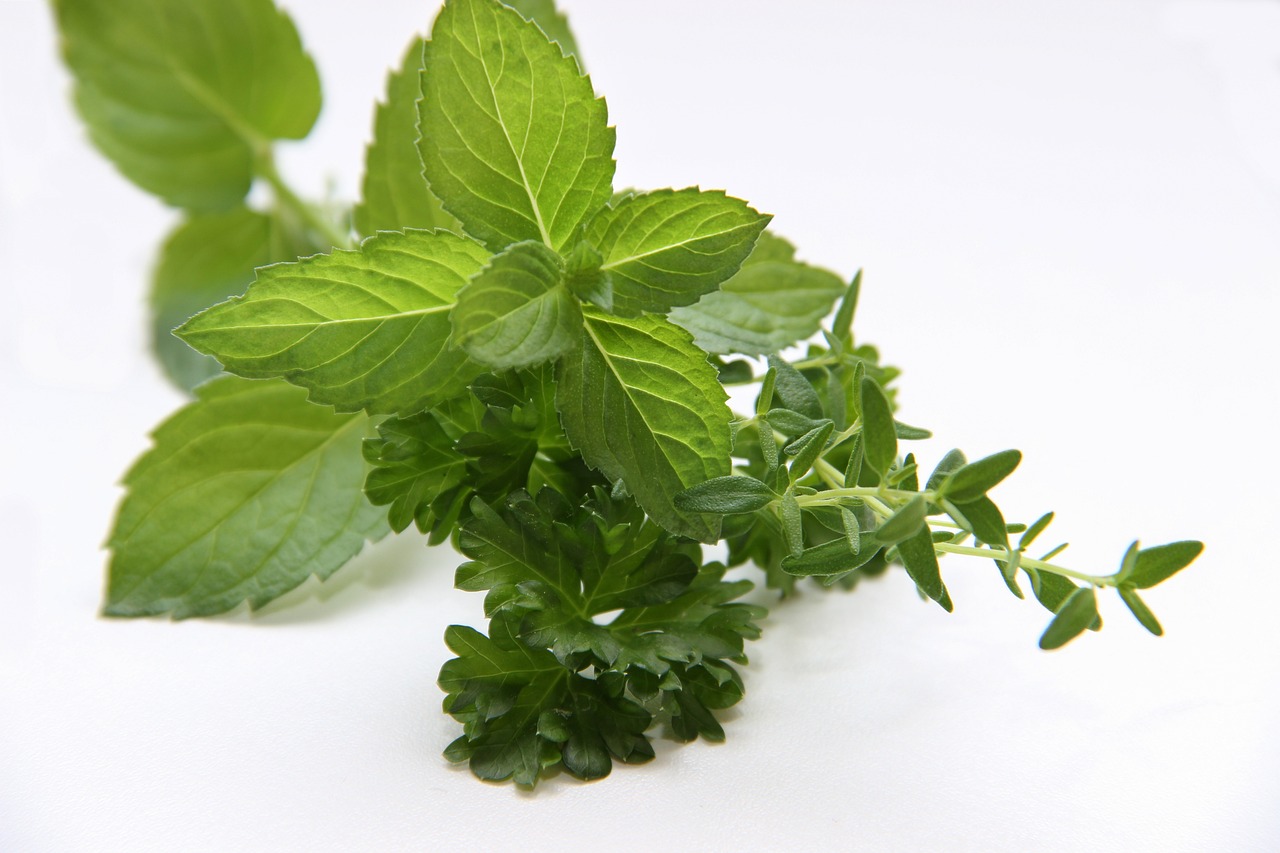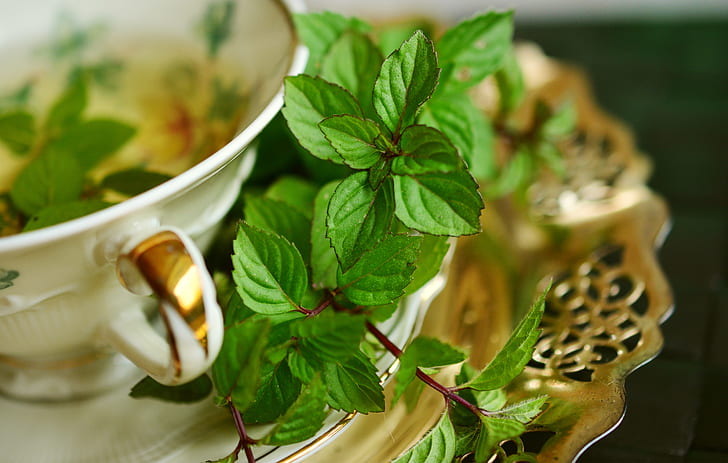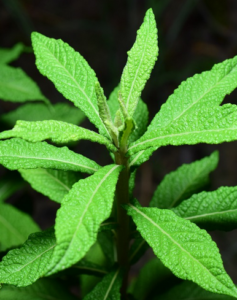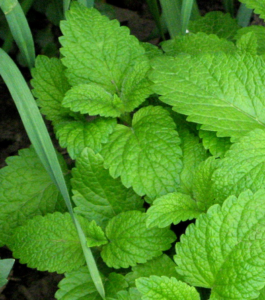Unlocking the Power of Mint ~
Let’s explore the health benefits of mint today! Most of us, when we think of mint, we usually think of a refreshing flavoring we put in our tea or chewing gum to soothe our breath. From aiding digestion, to helping with respiratory issues, to calming you down, the benefits of the mint family are nothing short of extraordinary.
In fact, some studies have shown that these herbs can even have antibacterial and anti-inflammatory properties.
So next time you take a sip of peppermint tea or enjoy a sprig of fresh mint in your salad. Remember that you’re not just getting a burst of flavor, but also a dose of natural medicine.

.
You know… sometimes, life’s got us feeling down in the dumps. And the struggle is real, my friends.
Luckily, there is a magical elixir that can help lift our spirits and soothe our souls: mint tea. Not only does it taste like a warm hug from grandma, but it also has some pretty impressive health benefits, which we will address in a minute…
Whether you’re looking to soothe a sore throat, ease stomach troubles, or just freshen your breath, there’s likely a mint out there with your name on it. Stir up a mint tea, pop a sugar-free mint candy, or just enjoy a minty-fresh breeze, because there’s no better way to feel both cool and healed at the same time!
So, let’s prepare a cup of this minty healing goodness!
- Start by boiling some water.
- While you wait, grab a handful of fresh mint leaves (if you have a garden, even better!) and a teapot.
- Once the water has come to a boil, place the mint leaves in the teapot and pour the water over them.
- Let the tea steep for about 5 minutes, giving the mint leaves a chance to infuse their goodness into the water.
- Pour yourself a cup and take a deep inhale of the minty aroma.
Ahh, can you feel the stress melting away?
Sip slowly and savor the flavor. Bonus points if you pair it with a healthy snack!

.
Health Benefits of Mint
Looking for a little pick-me-up that will also help you get over that pesky cold? Why not try a mint?
Not just any old mint, mind you – we’re talking about mints with medicinal properties.
There are a surprising number of these out there, from traditional remedies like peppermint and spearmint to more niche options like catnip and horehound.
For centuries, mint has been used as an ingredient in various medicinal remedies for a plethora of health problems. So, grab a cup of tea (mint anyone?), sit back, and let’s dive in because…
The best part is that these mint herbs? They can be easily incorporated into our daily lives by adding them to our tea, using them in aromatherapy, or making homemade remedies with them.
Types of Mint with Health Benefits
From peppermint to spearmint to catnip (yes, even your furry friends can benefit from the mint family), there are a plethora of different types of mints that are considered healing herbs.
The mint family has multiple subfamilies, each with unique and distinct properties. Unlocking the power of mint and exploring the health benefits is what we are up to today.
Mint can be used to
- relieve indigestion and nausea
- treat headaches and migraines
- improve mental clarity and concentration
- boost energy levels and stamina
- relieve stress and anxiety
- improve respiratory function
- soothe skin irritations
- repel insects
- used in natural cleaning products
- used as a natural air freshener
Plus, mint family herbs come complete with their own special powers – antioxidants! These herbs pack a punch when it comes to protecting your body from harmful free radicals, much more so than their other herb and spice counterparts.
Benefits of Peppermint:
Peppermint, scientifically known as Mentha x piperita, is famous for its digestive benefits.
In many cultures, peppermint tea is seen as a traditional home remedy for stomach ache, bloating, and indigestion.
Research suggests that peppermint might also help relieve headaches, menstrual cramps, and muscle pain.
The essential oil of peppermint has antimicrobial and anti-inflammatory properties. This makes it useful in treating skin conditions and respiratory problems, such as asthma and bronchitis.
Peppermint is a hybrid mint, a cross between watermint and spearmint.
Native to Europe and the Mediterranean region, it has been widely introduced into North America and other regions. The plant grows to a height of 30–90 cm (12–35 in) and produces small, white flowers.

Spearmint
Spearmint:
Spearmint, scientifically known as Mentha spicata, is known for its cooling and refreshing properties.
In traditional medicine, people use spearmint to help relieve digestive problems, coughs, and colds.
The essential oil of spearmint can help reduce stress and anxiety and has a calming effect on the body.
Interestingly, studies have suggested that spearmint may also help regulate hormones and lower testosterone levels in women with Polycystic Ovarian Syndrome (PCOS).
Note: Chocolate Mint is similar to Peppermint and Spearmint in health uses and benefits. It is mainly used in cooking. However, studies have shown that chocolate mint can help with digestion, boost your immune system, and even reduce stress levels. And let’s not forget the amazing smell – just taking a whiff of this fragrant plant can improve your mood. (When it comes to chocolate mint, it is the aroma not the taste.)
Did you know these are also in the mint family?

Lemon Balm Andrea_44 from Leamington, Ontario , Canada, CC BY 2.0, via Wikimedia Commons (cropped)
Lemon Balm:
Lemon balm, scientifically known as Melissa officinalis, is a herb with a lemony flavor and a soothing scent and fits perfectly well within the mint family herbal health benefits.
In traditional medicine, people use lemon balm to help with anxiety and sleep disorders.
Studies have found that lemon balm can help reduce stress and anxiety levels.
It also has shown potential in treating Alzheimer’s disease, cold sores, and digestive issues.
Catnip:
Catnip, scientifically known as Nepeta Cataria, is a herb in the mint family that is well-known for its effects on cats, but can also be helpful for humans.
The tea has been used in traditional medicine to help calm the nerves, reduce anxiety, and promote sleep.
The essential oil has anti-inflammatory properties that make it useful in treating arthritis, gout, and other inflammatory conditions.
Catnip is a species of mint native to Europe, Asia, and Africa. The plant grows to a height of 50–100 cm (20–39 in) and produces small, white flowers.
Lavender:
Lavender, scientifically known as Lavandula angustifolia, is a herb with a sweet, floral scent.
In traditional medicine, people have used lavender to help relieve stress, anxiety, and insomnia.
The essential oil of lavender has antimicrobial and anti-inflammatory properties, making it helpful in treating skin conditions such as acne and eczema.
Additionally, lavender has been used to help relieve headaches, menstrual cramps, and muscle pain.
Other mints:
You might think that there are only a few different types of mints in the family, but surprise! There are more varieties than you can shake a stick at.
Peppermint, spearmint, catnip, and even chocolate mint are just the tip of the iceberg. In fact, there are over 600 different species of mint in the world.
Some are used for cooking, others for medicinal purposes, and still others for a good old-fashioned fresh breath boost.
No matter how you use your mint, one thing is for sure: this family of herbs is nothing to sneeze at.
To name a few:
- Apple mint (Mentha suaveolens)
- Water mint (Mentha aquatica)
- Garden mint (Mentha viridis)
- Horsemint (Mentha longifolia)
It’s Not Only About the Health Benefits of Mint…
The mint family of herbs has long been steeped in folklore, tales, and legends.
Its powerful aroma and flavor have been celebrated and revered since ancient times. With folklore attributing magical and medicinal properties to these plants, who can resist?
One popular myth purports that mint plants can ward off evil spirits, while another suggests that it can bring good luck.
In some traditions, mint was believed to have healing powers and was used to treat various ailments:
- stomach disorders
- headaches
- respiratory problems
(and more ailments today, as mentioned above!)
Whether you believe in the magical powers of mint or not, it is undeniable that this family of herbs has played a fascinating role in history. And still, it continues to be a beloved ingredient in culinary and medicinal recipes today.
Still Sipping Your Mint Tea?
Now go forth and conquer the day, my fellow mint tea lovers!
